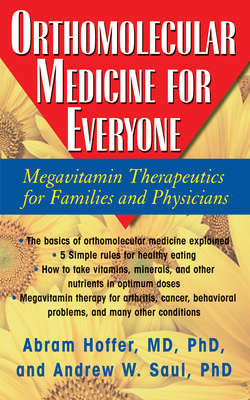Читать книгу Orthomolecular Medicine for Everyone - Abram Hoffer M.D. Ph.D. - Страница 17
WHAT KIND OF FOOD HAVE WE BEEN ADAPTED TO?
ОглавлениеAlthough we cannot be certain of it, the evidence is overwhelming that our ancestral food was of much higher quality than is our modern, high-tech food. Evidence is available from anthropological studies, from studies of people still living on food little damaged by food technology, and from studies of animals in zoos. This primitive food can be described by six adjectives: whole, alive, nontoxic, variable, indigenous, and scarce. Any diet which can be described by these six adjectives, whether it is mostly vegetarian or meat, will be suitable for people. Unfortunately, it is not the kind of food we feed people in hospitals, nursing homes, restaurants, cafes, and in most of our homes.
Whole—Animals in their native state eat whole foods. Deer graze on leaves and berries, wolves eat other animals, and bears eat fish, animals, insects, and vegetation. Our ancestors seldom luxuriated in too much food. Scarcity is a great motivation to not waste food. They ate all the edible portions of animals, even cracking bones to get at the marrow. They ate whole grains when they could get them. The advantage of whole foods is that they contain all the nutrients needed to keep life going. But whether there was an initial advantage or not, we have been locked into a system that demands we eat foods that we have adapted to—and we have adapted to whole foods.
Alive—In the native state, animals, especially carnivores, eat food that is alive or has recently been alive. The advantage is that this food has not deteriorated by loss of nutrients, by oxidation, and by contamination with bacteria and fungi. When food does not have to be stored, there are no storage problems.
Nontoxic—Most plant species are poisonous for man. Our ancestors used two main guidelines: Did the plant taste neutral, sweet, or bitter? And did it make one sick or dead? By trial and error, we discovered which plants and which portions of plants we could eat. Theoretically, there is no nontoxic food, since every species is foreign and can induce injury in some people. However, food plants are relatively nontoxic and will do no harm if our diet adheres to the six adjectives.
Variable—Our ancestors’ diet depended on time of day and season as well as on geography. They were wanderers who followed their food supply, as did the !Kung tribes in the Kalahari Desert until recently. When we eat a large variety of foods, we are less apt to become allergic to any one food. This variability also increases the nutritional quality of the diet, since one food’s surplus of some nutrients can compensate for another food’s deficiencies. The Native American formerly ate a much larger variety of foods than we or they do today.
Indigenous—Animals and plants adapt to cold weather by changing their ratio of omega-3 to omega-6 essential fatty acids (EFAs). Omega-3 EFAs are more liquid, freeze at lower temperatures, and, as antifreeze protects our cars, they protect our bodies. If we eat foods grown locally, we already start with a ratio of omega-3 to omega-6 suited to that climate and we need to do less work biochemically to try to create the correct EFA ratio in our bodies. It is difficult to correct this ratio without using the right foods. People who live on indigenous (locally produced) foods will be healthier and adapt more readily to their climate.
Scarce—It is unlikely that there was any surplus of food until agriculture developed about 10,000 years ago. The best proof is that the world’s population did not begin its explosive increase until agriculture developed. There always was and always will be a strict relationship between the number of people and the supply of food—famine victims in Africa will attest to that. We have not adapted to superabundance. Rather, we are adapted to conditions of temporary abundance followed by temporary starvation. It is doubtful that there were many obese cavemen and women.
